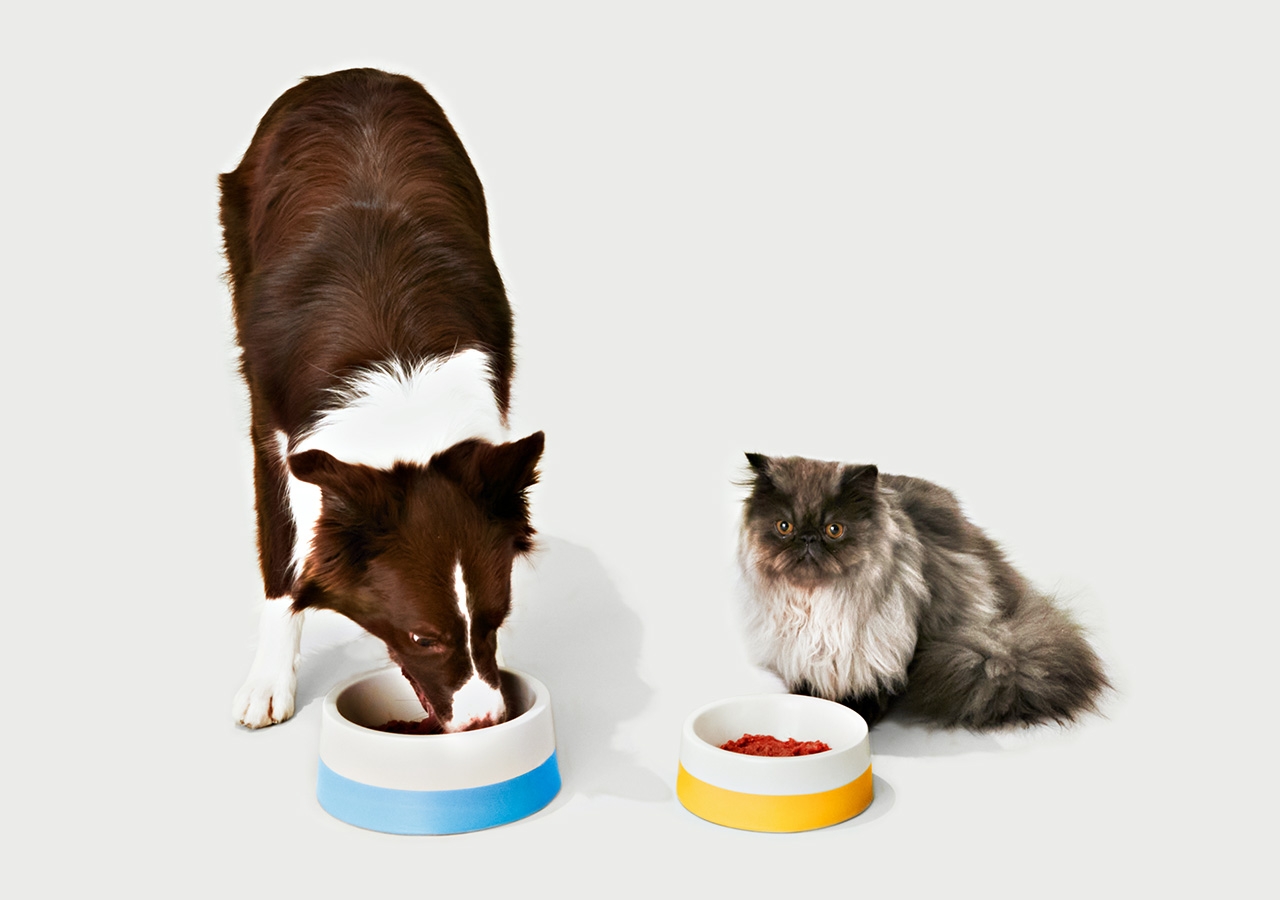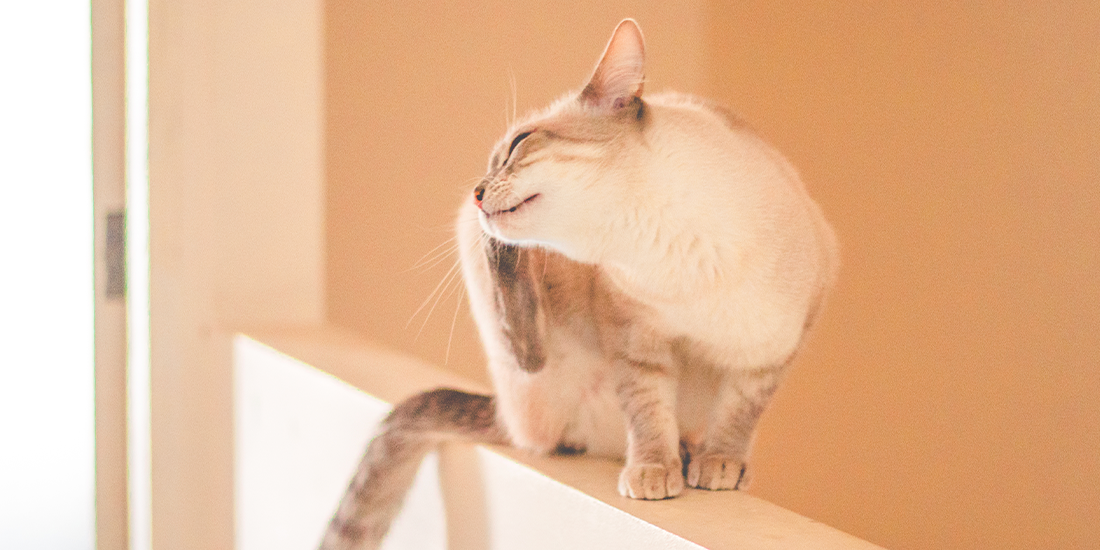[vc_row][vc_column][vc_column_text css=””]
You’ve probably experienced it before. That feeling when your body begins reacting to something it doesn’t like. It could be the temperature changes from the alternating seasons, the pollen in the air, or maybe even an ingredient in that delicious sandwich you just ate. Either way, there’s a good chance you experienced an allergic reaction, like a sensitive stomach or skin allergies, and just like us, cats can have them, too.
Finding what causes or activates allergies will vary from pet to pet, but a healthy diet is a great first step to managing our furry friends that are a little more sensitive. Let us show you what the best cat food for allergies is.
[/vc_column_text][/vc_column][/vc_row][vc_row][vc_column][vc_row_inner content_placement=”middle”][vc_column_inner width=”1/2″][vc_column_text css=””]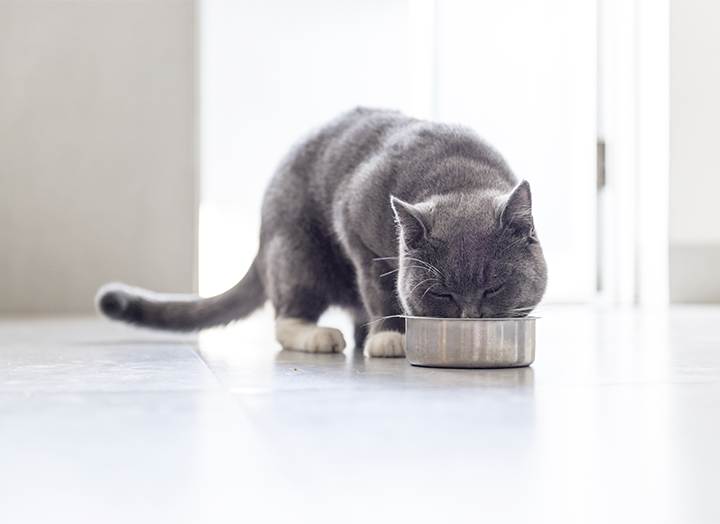
How do I know if my cat has allergies?
From kittens to elder felines, and indoor cats to outdoor ones, allergies can get the best of cats despite their age or lifestyle. With that said, you know your feline friend better than anyone else and you’ll start noticing if your cat begins developing allergies.
While there can be several causes of allergies in cats, the list of symptoms is generally a lot more narrow. These can include hives, digestive upset, dry or itchy skin, fur loss, respiratory issues, or discharge from the eye.[/vc_column_text][/vc_column_inner][/vc_row_inner][vc_column_text css=””]
What causes allergies in cats?
When it comes to allergies, we humans aren’t that different than our feline friends! The time of year, the things we eat, and even certain bugs can get us both itching all over! In fact, the most common culprits of cat allergies are:
Environment
Just like us, the environment your cat is in can have an impact on its body. If your cat’s body isn’t agreeing with something in the environment they’re in, this may cause the internal warning light to go off and trigger a reaction. This includes pollen in the air, certain fabrics in your home, cleaning solutions, and even some types of cat litter. For this reason, it may be best to stick with unscented litter!
Food
This should come as no surprise, but if a cat has an allergy or intolerance to an ingredient in its diet it could trigger a reaction. Traditional kibbles and canned wet cat food can have upwards of 30 ingredients, making it hard to narrow down the exact allergen they reacted to. That said, food sensitivities are a significant contributor to cat allergies.
Though it will take time to point out the probable allergen, there are a few common culprits like artificial preservatives, dye, and corn products.
While artificial dye may make the cat food look more enticing, it actually adds no benefit whatsoever and could instead cause reactions. Next, cornmeal is sometimes added as an inexpensive filler. Since many cats are allergic to corn, the chances of them having a reaction are high and this could result in itchy, flaky skin.
Fleas
Fleas are a common nuisance for both cats and dogs. Cats can be allergic to the flea’s saliva, which provokes the release of a histamine-like compound and causes your furry friend’s skin to become very itchy. According to petmd.com, flea allergy dermatitis commonly occurs on your cat’s head, neck, and back. This is also known as the “racing stripe” pattern on their skin.[/vc_column_text][vc_column_text css=””]
Need help choosing a raw food diet?
We love assisting pet parents in their raw journey! If you have any questions about selecting raw food for your pet, please feel free to contact us.
[/vc_column_text][vc_row_inner content_placement=”middle”][vc_column_inner width=”1/2″][vc_column_text css=””]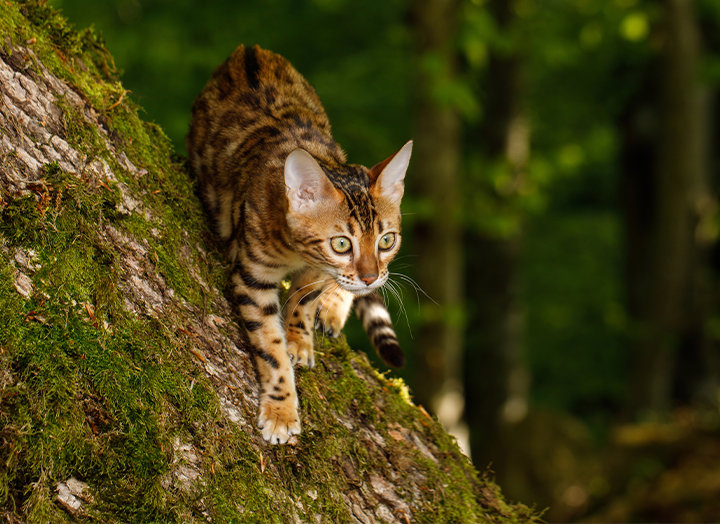
Is there a difference between cat food sensitivity and allergy?
Yes, there is a difference between cat food sensitivity and allergy. Often time, pet parents consider these the same things, but they are in fact different and knowing the difference is extremely beneficial to your cat’s health. Speaking to your holistic veterinarian can help you understand the specificities in-depth, but we can break down the general differences right here.
Cat food sensitivity.
You can also call this a food intolerance, kind of like when someone refrains from having dairy in their diet. A food sensitivity doesn’t necessarily mean they’re allergic to an ingredient, but their body sure doesn’t agree with it. These are usually the result of a certain ingredient found in food and the symptoms are linked to the digestive system. This means that specific foods may cause a sensitive stomach to feel upset and create frequent trips to the bathroom with loose stools.
Cat food allergies.
Cat food allergies are usually more severe than food sensitivities. They expand beyond the digestive system and can result in an array of other bodily reactions. The Cornell Feline Health Center says the most visible signs of a food allergy like relentless scratching or the materialization of skin lesions do not start overnight. These types of symptoms will usually begin small and will become more evident and severe over time (sometimes taking months). A food allergy can appear at any point in time in a cat’s life, even if it’s from a diet they’ve been on for years.
[/vc_column_text][/vc_column_inner][/vc_row_inner][vc_column_text css=””]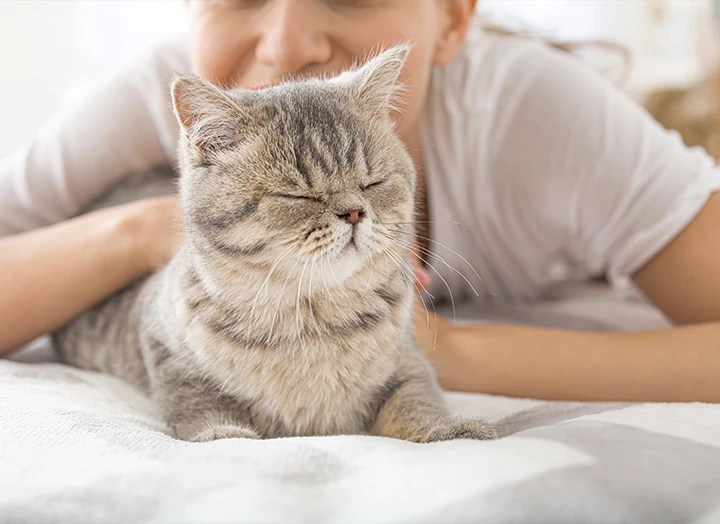
How can I check if my cat has food sensitivities?
If your cat begins experiencing any of the aforementioned symptoms, like hives, digestive upset, or skin irritation, it could have a food sensitivity or allergy.
Imagine this.
You order a tasty burrito and it’s lined with tons of delicious ingredients, like veggies, meats, grains, spices, and more. Suddenly you get a little itchy and a rash develops, but where did it come from? What caused it to happen? Since there are so many ingredients involved in this one meal, it can be very difficult to figure out what caused the reaction.
The same thing goes for a cat that has been eating a traditional kibble or canned food diet. Like the burrito, it’s loaded with ingredients. Some that you know upfront, and others that you may have never heard of. Since these foods can contain upwards of 30 ingredients, it’s hard to point a finger at which one is to blame. They include everything from multiple meat sources, carbohydrates, preservatives, and additional flavourings that could be the culprit. Luckily, there are ways to get to the bottom of it.
Elimination diets for your cat.
You may have heard of elimination diets for people. Well, the same thing exists for cats and other pets, too. Elimination diets are one of the most effective ways to determine if your cat has a food sensitivity or allergy by zeroing in on specific proteins. This is a great way to explore the best cat food for allergies.
You begin by feeding your cat a single-protein diet over a period of time while removing all others. This way, it becomes easier to identify the food source triggering the allergic reactions.
You should continue an elimination diet for 8-12 weeks. We know it may seem like a long process up front, but it takes time for an allergy to present itself. Once you’ve begun the diet, if symptoms appear within 14 days, your cat is allergic to the ingredient you’ve been feeding and you should avoid that protein moving forward. From here, it becomes trial-and-error with the proteins you are feeding. It can take up to 10 weeks for certain symptoms to resolve themselves but by the end of this period, you should discover the best cat food for your little pal.
Over time, you can begin introducing new animal proteins into your cat’s diet and if no reactions appear, you’re in the clear!
It is also important to note that when feeding your cat an elimination diet, you must be strict and not add anything else into the mix. This means no additional treats (even if they’re good) because they may trigger food allergies.[/vc_column_text][vc_row_inner content_placement=”middle”][vc_column_inner width=”1/2″][vc_column_text css=””]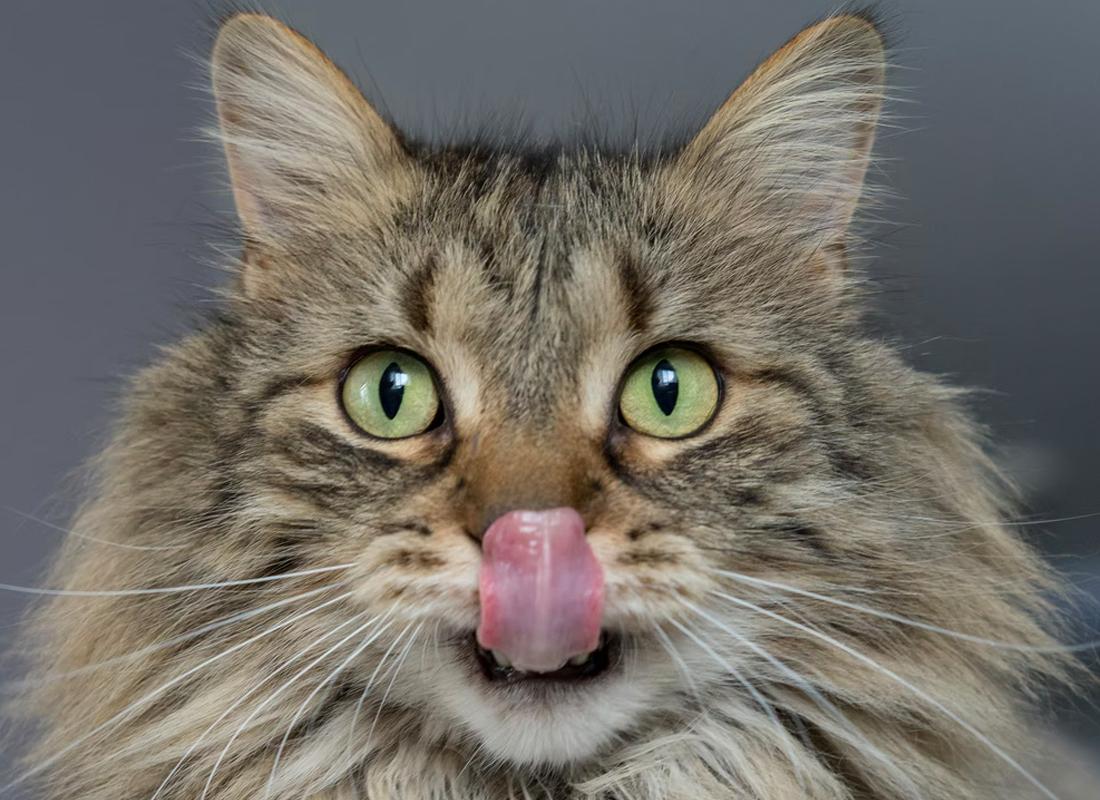
What food should I feed my cat with allergies?
In most cases, there’s no prescription food necessary.
If you’re looking for the best cat food for allergies, we recommend low-glycemic, single-ingredient diets. We’re proud to supply pet parents with raw food diets that are simple and consist of the most basic, essential ingredients. That means only meat, bone, and organs will be found in our Bold by Nature Cat recipes.
We consider our Bold by Nature Cat recipes to be the best cat food for allergies. Our Chicken for Cats and Rabbit for Cats recipes are single-ingredient delicious raw meals made with the betterment of your furry feline in mind. There are no artificial flavors and are a great source of minerals and nutrition.
For instance, Rabbit for Cats is 100% rabbit (rabbit meat, rabbit bone, rabbit liver, & rabbit heart) with no filler, so you know exactly what is going into your cat’s diet. If your cat’s symptoms haven’t changed after trying this diet, it’ll be a great indication of what has caused the allergies.
On top of our Bold by Nature Cat recipes being able to work in an elimination diet, they also boast a variety of additional benefits. For cats that are stubborn drinkers, each raw recipe is high and naturally rich in moisture, meaning it’s a great way to keep your cat hydrated. They’ll literally drink in the benefits![/vc_column_text][/vc_column_inner][/vc_row_inner][vc_row_inner content_placement=”middle”][vc_column_inner width=”1/2″][vc_column_text css=””]
What is a common food allergy in cats?
Any foreign substance that triggers your cat’s body to respond can be considered a food allergy. For the most part, they’re all harmless, but can still cause allergic reactions in your cat. The most common allergens are chicken and beef, but dairy, fruits, vegetables, and even high-starch ingredients can cause allergies for your cat.
What is hypoallergenic cat food?
Quite simply, it is a kind of cat food made specifically for pets with food and skin allergies. It can also be given to cats with certain food sensitivities or intolerances.
Hypoallergenic cat food is made with ingredients that lessen the chance of causing a reaction in your furry pal. Although this is a good option for your pet with allergies, we still recommend feeding your cat a raw food diet.
Our Bold by Nature Cat recipes are made without added processing, contain wholesome ingredients, and go through a rigorous quality control check to ensure only the best for your pet.[/vc_column_text][/vc_column_inner][vc_column_inner width=”1/2″][vc_column_text css=””]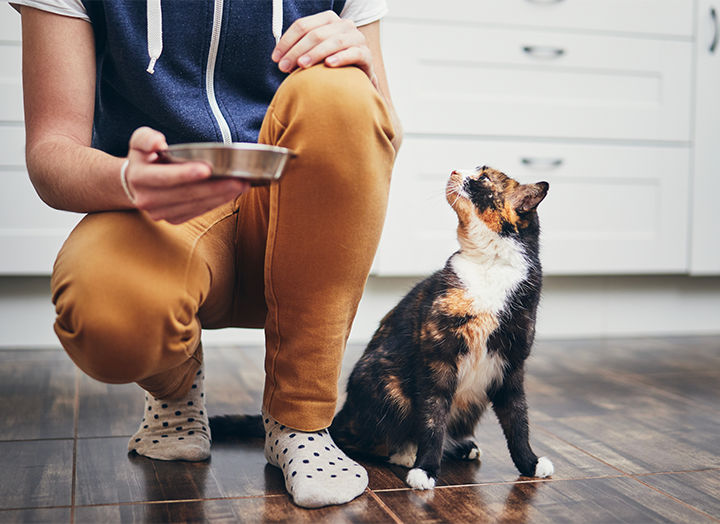
How do I best choose a diet for my cat with allergies?
If you’re looking for the best hypoallergenic cat food for your pet, there are a few things you should be on the lookout for before you buy. Start by asking yourself these four questions.
What proteins are used?
Since proteins are the likely cause of allergies in your cat, this is the most important thing to consider. Limited ingredient foods and diets should contain a single animal protein.
Where are the ingredients sourced?
It’s good to know where your cat’s food is coming from! Ensure the product isn’t getting in contact with your cat’s potential allergens.
What additives are in the diet?
When purchasing hypoallergenic cat food, the fewer ingredients the better. This lessens the risk of a reaction. Ingredients like wheat, corn, or dairy can trigger your cat’s system.
Does the product contain any fillers?
Just like additives, fillers in a cat’s diet such as potatoes, cornmeal, or other starchy carbs can cause food allergies to flare up. You’ll want to check the label to ensure it’s a grain-free diet.
[/vc_column_text][/vc_column_inner][/vc_row_inner][vc_row_inner content_placement=”middle”][vc_column_inner width=”1/2″][vc_column_text css=””]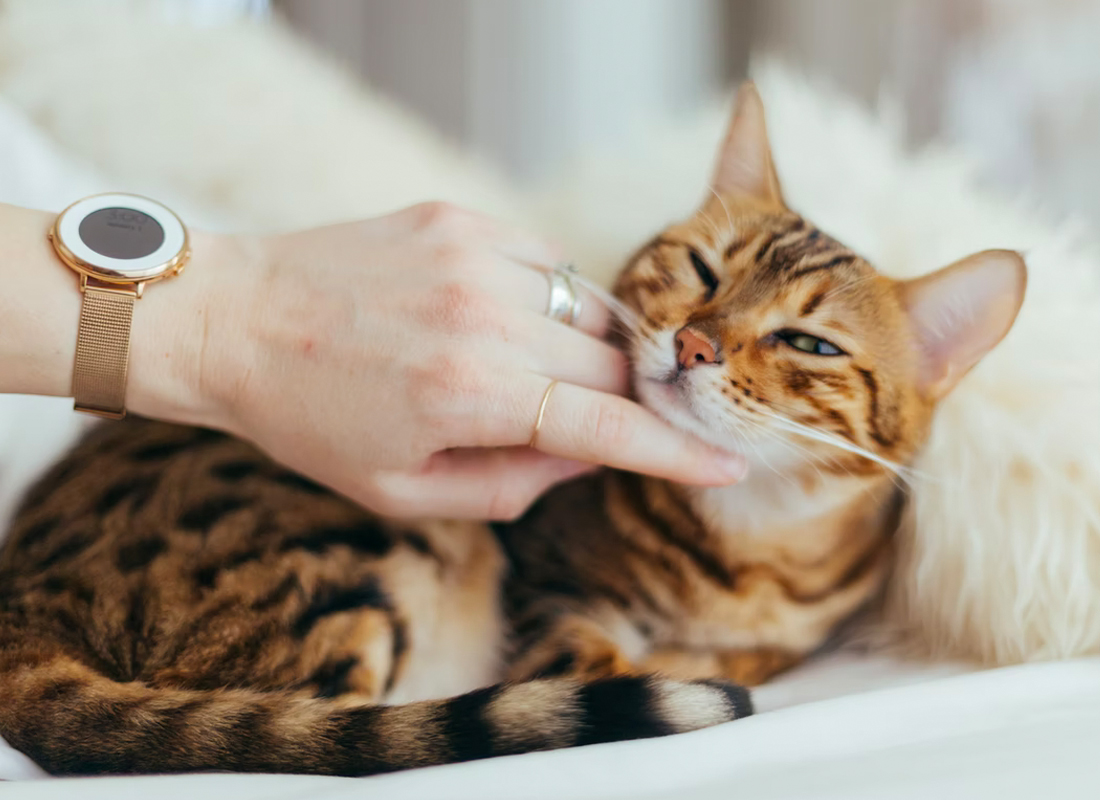
What is the best way to switch my cat’s food?
At Bold by Nature, we offer pets delicious raw diets that consist of single proteins. As we previously stated, this helps avoid any culprit allergens that may be causing your cat to react.
If you’re planning on switching your cat to a raw diet, we recommend going cold turkey. Literally. This means starting your cat’s raw adventure off with Bold by Nature Turkey for Cats. Turkey is an easier protein for cats to digest and combined with smaller, more frequent meals throughout the day will allow your cat to transition onto the diet easier.
If they’re currently on a kibble diet, you can feed that to them in the morning, but by nighttime, the raw feeding can begin.
For cats with sensitivities, it will take a little while longer for their bodies to get used to new food. With that said, we suggest that during the transition period you feed them small amounts throughout the day to get them used to it. If you’re currently feeding canned cat food, you can mix that with the new raw diet. This will help to get them used to the new food.
For more information on how to make the diet switch for your cat, please read From bland to bold: transitioning your pet to raw.
What human food should my cat be avoiding?
As tempting as it may be to share your favourite foods with your cat, it’s better to dish out meals prepared specifically for them.
Some foods can be especially harmful to your cat’s health, like onions, garlic, chocolate, grapes, raisins, and xylitol so it’s best to keep these in your bowl and out of theirs.
[/vc_column_text][/vc_column_inner][/vc_row_inner][vc_column_text css=””]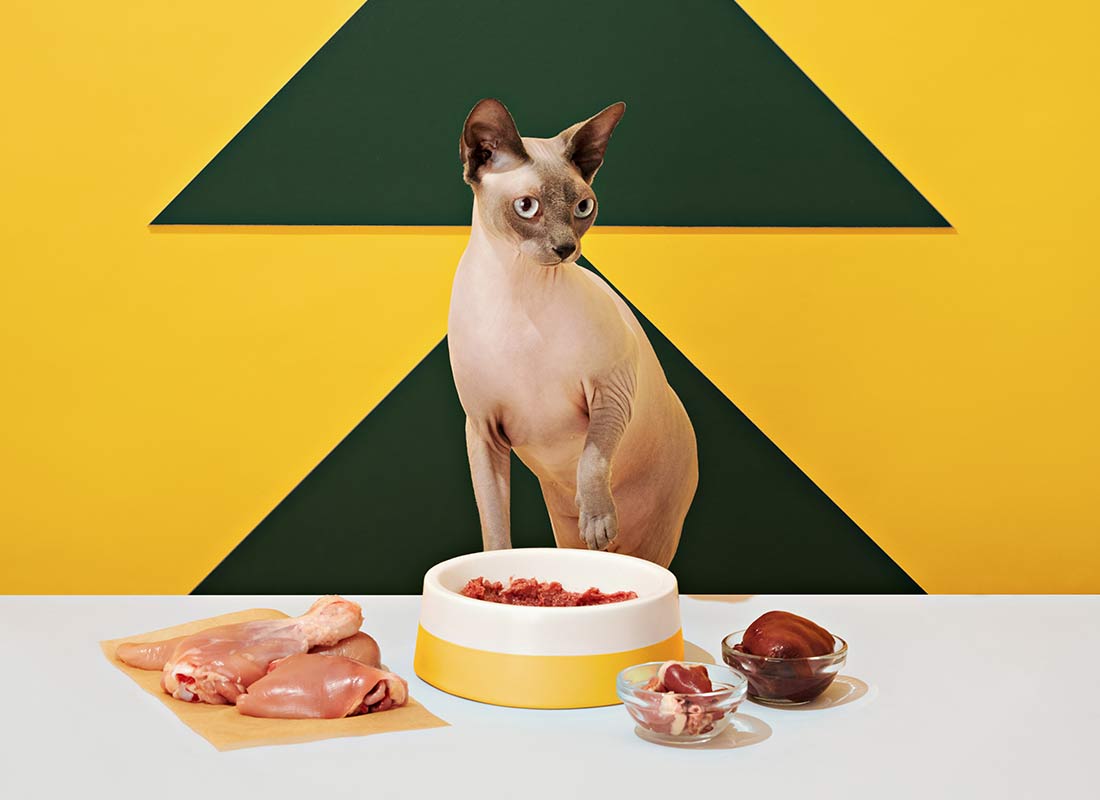
No yeast? No problem.
Yeast is a common allergen that causes ear infections and itchy paws in both cats and dogs alike and it can be found in the meals that are fed to your pets. It is not uncommon for traditional pet foods like kibble often contain high sources of glycemic carbohydrates like wheat, corn, soy, rice, and even potatoes. These high-sugar carbs feed the yeast that often causes ear infections and itchy paws in cats and dogs.
Although this isn’t a problem you can just fix overnight, the best solution might be to avoid giving your cat any unnecessary carbohydrates and stick to low-glycemic vegetables like carrots whenever you can. A grain-free diet is the best route to take to ensure your cat won’t have yeast in its system.
As we stated previously in this article, our Bold by Nature Cat recipes keeps the ingredients to a minimum so that your pet doesn’t have any run-ins with potential allergens. For more information on how they could help your pet’s diet, please read the Bold benefits of Mega, Select, and Cat.[/vc_column_text][vc_row_inner content_placement=”middle”][vc_column_inner width=”1/2″][vc_column_text css=””]
Can a raw diet help my dog with food allergies, too?
Yes! Just like cats, dogs can experience food allergies from a variety of different ingredients, too. Their symptoms are very similar to cats, with things like hot spots on the body, ear infections, eye discharge, and more.
If you’re looking for a solution to your dog’s allergies, an elimination diet works wonders just as well as it does with cats. They’re just as effective a way to determine if your dog has an allergy. Our Bold by Nature Dog recipes are healthy and made with minimal ingredients to ensure you know exactly what’s going into their bowls.[/vc_column_text][/vc_column_inner][/vc_row_inner][vc_row_inner content_placement=”middle”][vc_column_inner width=”1/2″][vc_column_text css=””]
How can a veterinarian help my cat with allergies?
If you suspect your cat may have a food allergy, you should speak to your holistic veterinarian as soon as possible before taking any other action. They will know best, can offer up an allergy test, and can help guide you toward what’s most suitable for your cat.
Typically, a food allergy will be detected by a physical exam. If your cat has obvious signs of a reaction, it’ll usually be visible quite quickly. If the reaction is digestive upset or another impact on digestive health, a diet change will generally help diagnose if the cat is allergic to a certain food.[/vc_column_text][/vc_column_inner][vc_column_inner width=”1/2″][vc_column_text css=””]